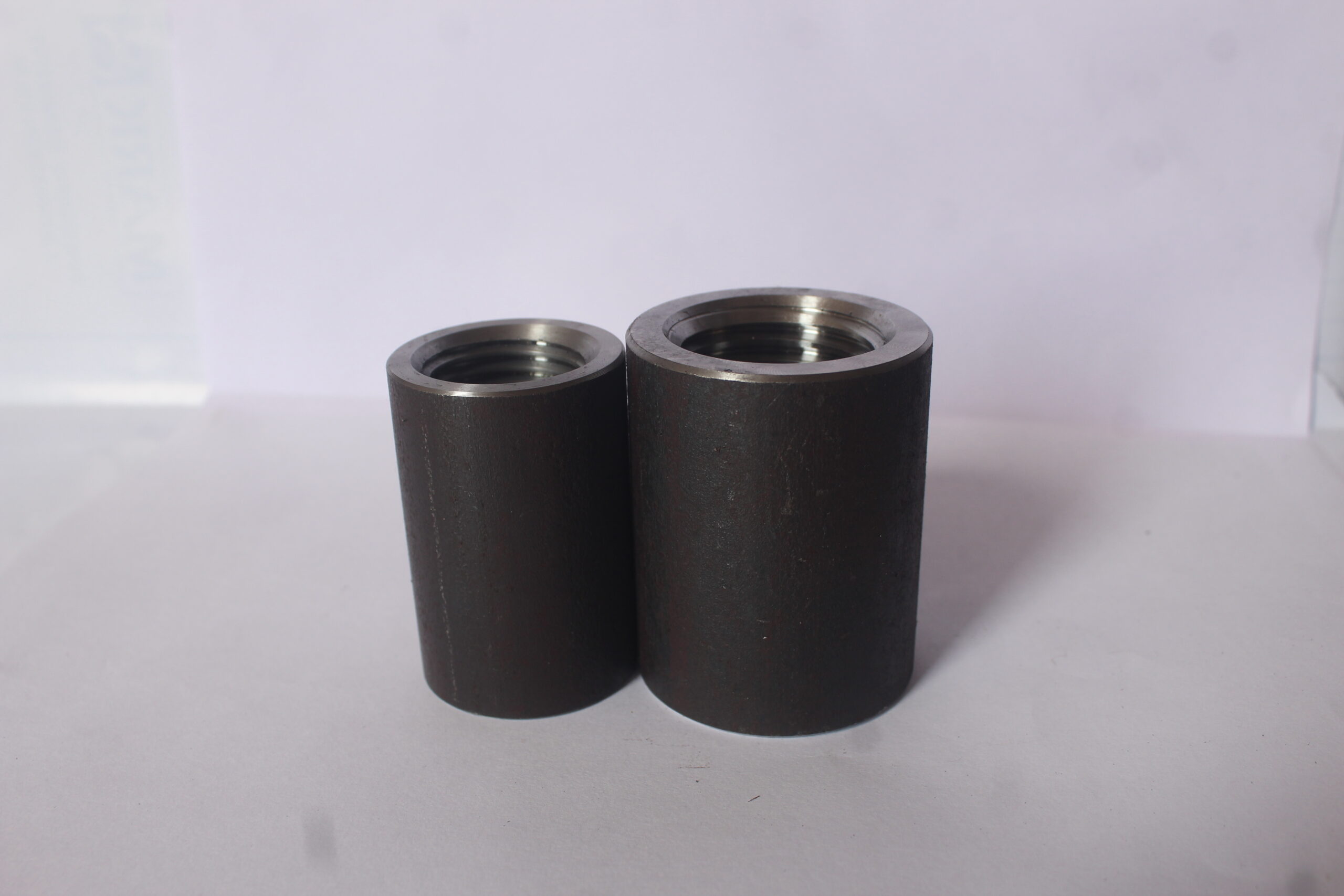
Cutting the Rebar
The ends of the reinforcement bars are cut square for proper alignment.
Threading the Ends
Parallel threads are machined onto the rebar using a threading machine.
Installing the Coupler
The coupler is screwed onto one bar, then the second bar is aligned and screwed in from the opposite side.
Tightening the Connection
A wrench is used to ensure full engagement and tightness, creating a secure splice.
High Strength and Reliability
Provides a direct bar-to-bar connection with full tensile capacity, eliminating weak points common in lap splicing.
Reduced Rebar Usage
No overlap means less steel consumption and cost savings.
Faster Construction
Quick installation speeds up project timelines and reduces labor costs.
Space Efficiency
Ideal for congested reinforcement areas where overlapping is impractical.
Seismic Resistance
Continuous load transfer enhances structural stability during earthquakes.
Easy Quality Control
Visual inspection of threads and coupler alignment ensures reliable joints.
Step 1: Preparation
- Cut rebar ends cleanly and remove rust or dirt.
Step 2: Threading
- Use a parallel threading machine to cut threads to the required length.
Step 3: Assembly
- Screw the coupler onto the first bar and align the second bar for connection.
Step 4: Final Tightening
- Use the recommended torque to secure the joint.
Step 5: Inspection
- Check alignment and tightness before pouring concrete.
High-rise buildings
Vertical and horizontal reinforcement continuity.
Bridges and flyovers
Handling high tensile forces.
Precast concrete structures
Quick assembly of precast components.
Industrial projects
Dense reinforcement zones need space efficiency.
Seismic areas
Structures requiring enhanced earthquake resistance.
Material Efficiency
Couplers save steel by removing overlap length.
Strength
Couplers provide full bar strength; lap splicing depends on bond strength.
Construction Speed
Faster and more straightforward than overlapping bars.
Space Management
Reduces congestion, improving concrete compaction.
Applications & Grades
They are a base material in applications that do not require any formability beyond minimal bending and/or roll-forming.
- Application : Construction
- Finishing: Polished
- Grade: EN8D
- Brand: SIRC
